Downtown San Francisco is experiencing its worst office vacancy crisis on record, with 31% of space available for lease or sublease. In the heart of the city, an astounding 18.4 million square feet of real estate is available — enough space to house 92,000 employees and the equivalent of 13 Salesforce Towers.
The Chronicle mapped and charted every major downtown office building’s vacancy, using data provided by real estate brokerage Lee & Associates.
The surge in empty offices means plenty of options for tenants, a major change compared to early 2020, when the vacancy rate was around 4%. It’s also fueled calls for converting offices into housing, or bringing more fun features like bars or roof decks to the workplace.
Some of the emptiest buildings can be tied to cutbacks by tech giants Salesforce and Meta, which have sought to cut costs with mass layoffs and office consolidations.
Salesforce, the city’s largest private employer, embraced remote work and has listed offices for lease at 50 Fremont, where 90% of space is vacant, and in Salesforce Tower and 350 Mission St.
Salesforce’s subsidiary Slack also left its former headquarters at 500 Howard St., which is 95.4% vacant, and listed sublease space at 45 Fremont St., which is 60% vacant.
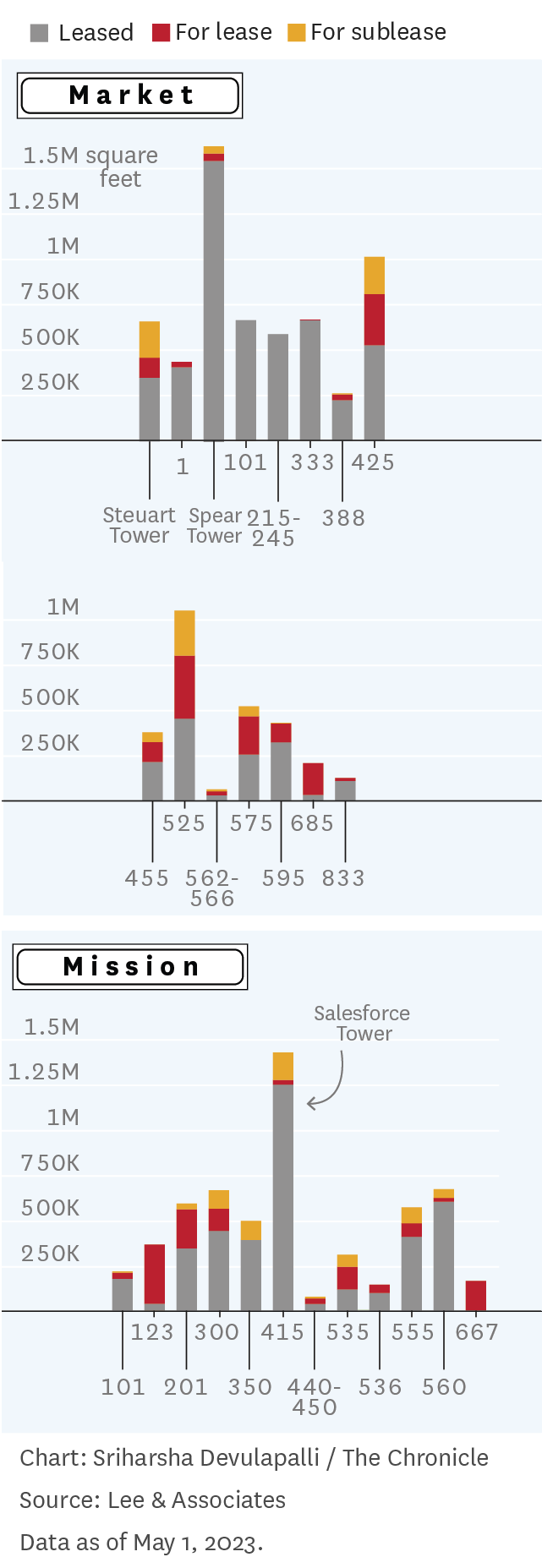

Meta listed all 435,000 square feet at 181 Fremont, the city’s third tallest tower, for sublease, making it 100% vacant.
Another empty building is 345 Montgomery St., part of the former Bank of America complex. Co-working firm Regus scrapped plans to open in the former bank retail space and sought to terminate its lease. Landlord Vornado, which co-owns the property with former President Donald Trump, sued and won after arguing the lease remains active.
That saga was unusually contentious — most major tenants have continued to pay rent even for offices that they aren’t fully using, and they remain on the hook for space that’s listed for sublease if they aren’t able to find subtenants.
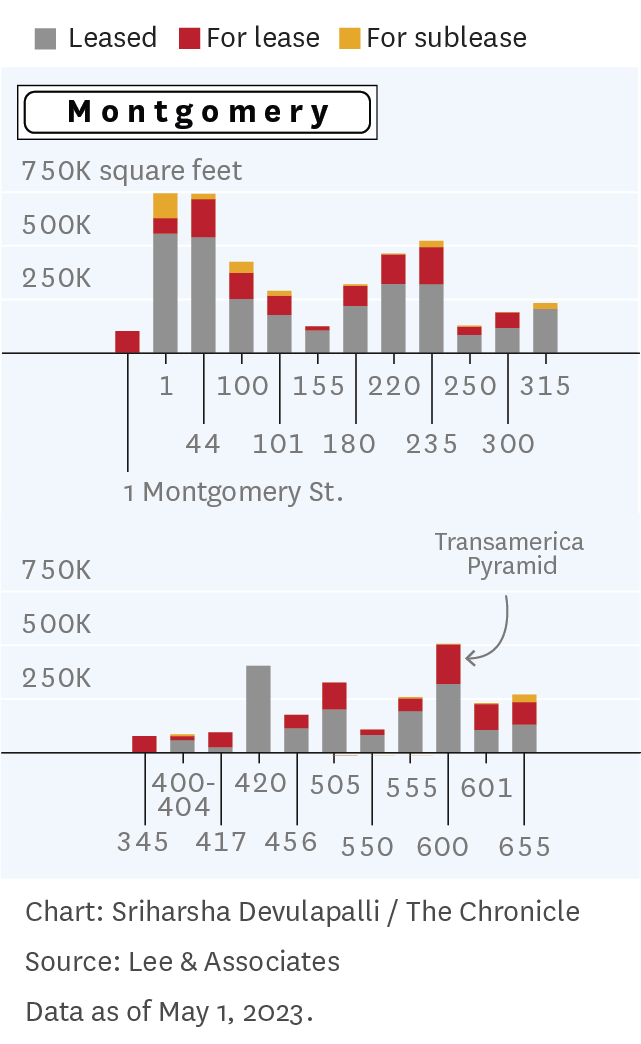
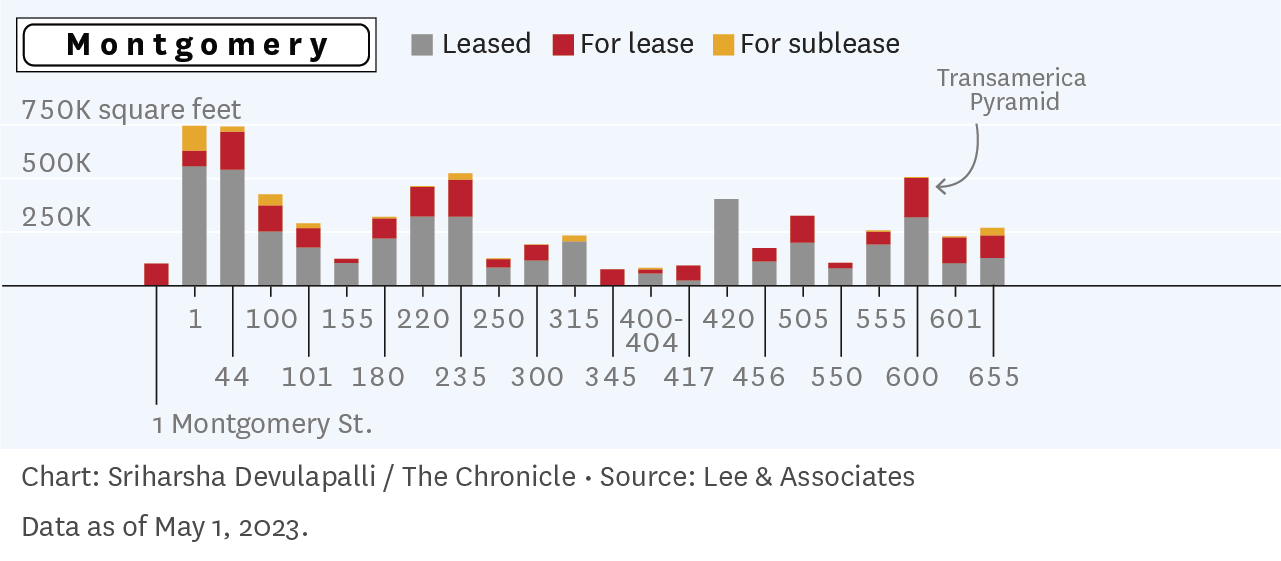
But with more leases expiring this year, the vacancy rate is expected to shoot even higher. That has dire implications for the city’s tax base, as property owners have appealed their annual tax bills.
Some landlords are feeling the pain as well. Redco and AEW Capital Management paid $84 million in 2019, near the top of the market, for a historic building at 1 Montgomery St., with plans for a big renovation. The companies lost control of the 98.6% vacant property to their lender in December, the San Francisco Business Times reported.
Lee & Associates sees a big upside in the current market — for tenants, at least.
“This is the first time in over a decade where office tenants in San Francisco have had any leverage or negotiating power against landlords. This is an incredible opportunity for tenants to exploit a commercial real estate market that is experiencing a historically high vacancy rate,” said Cody Kollmann, founding principal at Lee & Associates.
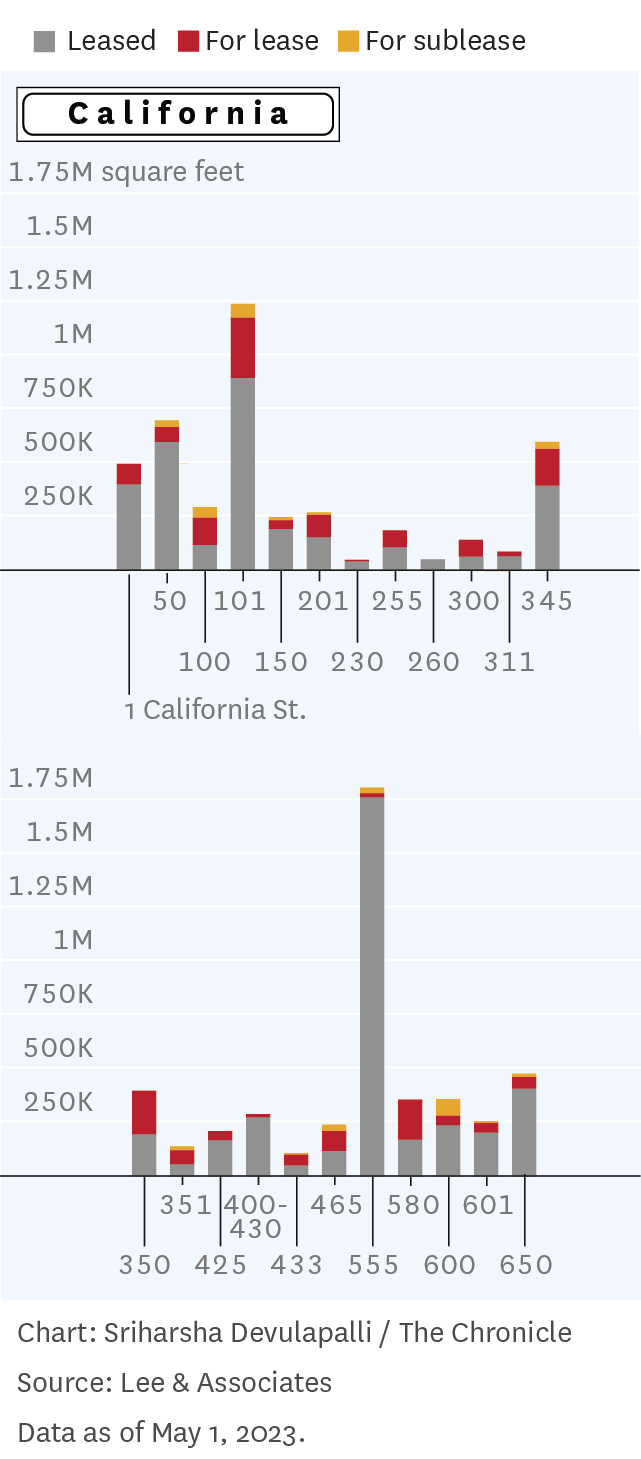
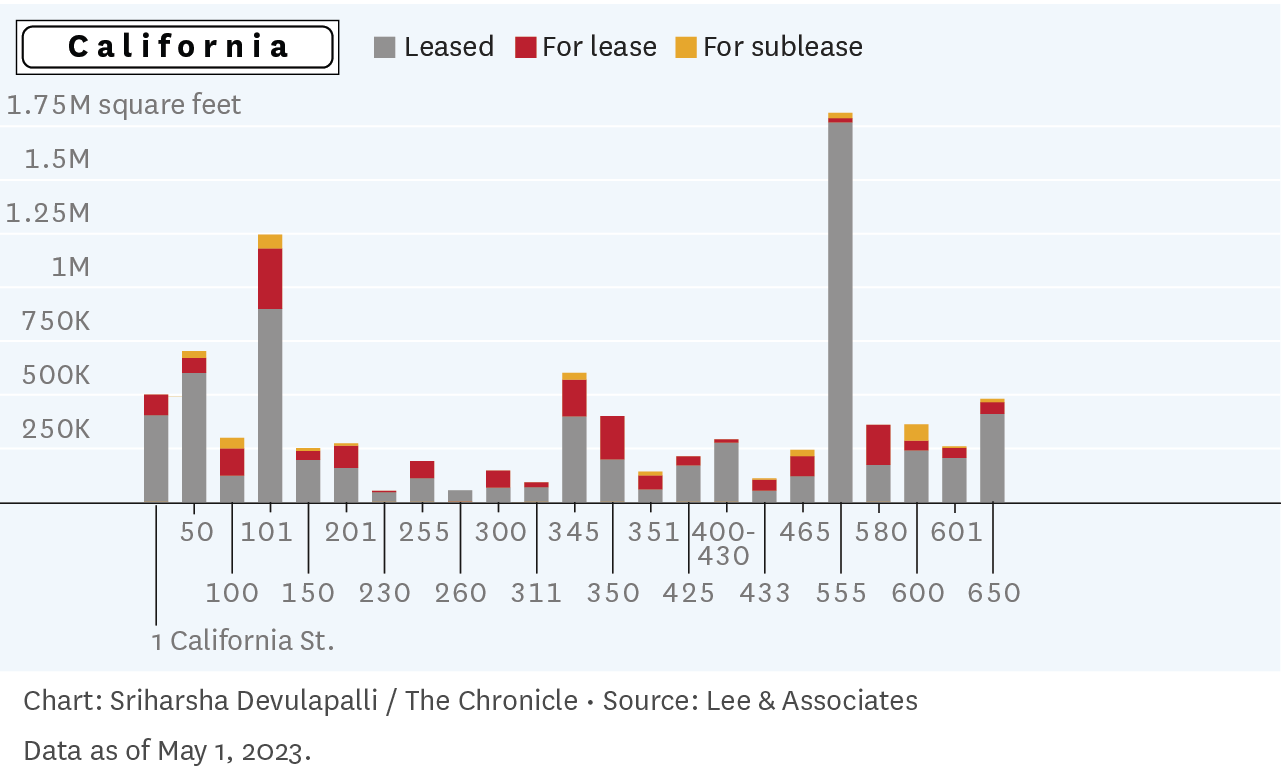
As for landlords, they need to offer more than just a place to put a table and desk.
“The more an office building acts like a hotel, the more office tenants are attracted to it and the more likely they will stay,” said David Klein, managing principal at Lee & Associates.
Think lounges, bars, restaurants, roof decks and outdoor parks. That’s exactly the strategy at the Transamerica Pyramid, where owner Michael Shvo is investing $250 million in a renovation of the icon that includes a private club and plans for public eateries. The Pyramid is 36.7% vacant.
“I strongly believe the office experience should be at the same level as luxury residential and hospitality,” Shvo previously told The Chronicle. “In the last two years, we’ve made our homes into our offices, now it’s time to make our offices feel like our homes.”
Nearby, at the 100% vacant 301 Battery St., former home of the San Francisco Federal Reserve, new owner Aby Rosen is doing his own renovations and contemplating installing a pickleball court.


There are bright spots in the city’s economy.
Despite mass global tech layoffs, San Francisco has been only partially hit, and the city’s unemployment rate is only 3%, which is higher than 2% last year but minuscule compared to historic trends.
“Lots of vacant office space is much better than lots of unemployed people,” Ted Egan, the city’s chief economist, said in a recent report. Egan thinks the likeliest outcome is office rents drop enough for tenant demand to rise, leading to an eventual recovery.
That drop appears to be happening, though it’s still unclear whether demand will follow. Annual pricing for lower-tier buildings is around the $50 per square foot range or lower, said Nick Slonek, principal and regional managing director at Avison Young, a real estate brokerage. That’s about two-thirds of the citywide average asking rent of around $75 per square foot, which is already down from around $85 per square foot before the pandemic.
“That’s going to be, really, the inflection point in the market, where we see market rents land at what we perceive as an atrocious number today,” said Slonek.
There’s currently a bifurcated market as tenants flock to the highest-quality space. Avison Young found that in the highest quality downtown offices located above the 13th floor, so-called “view space,” the vacancy rate is 7%.
“It’s very little because there is a flight to quality through most downturns,” said Dina Gouveia, Northern California regional lead of innovation and insight at Avison Young.
Long term, Slonek is still optimistic about the Bay Area, citing the diverse economic engines of tech, biotech, finance and world-class universities.
“Trying times create opportunities, and I think that it’s going to create an opportunity for, again, the next driver, a new, new thing,” he said.
Reach Roland Li: [email protected]; Twitter: @rolandlisf. Reach Harsha Devulapalli: [email protected].
This post was originally published on this site be sure to check out more of their content.
















